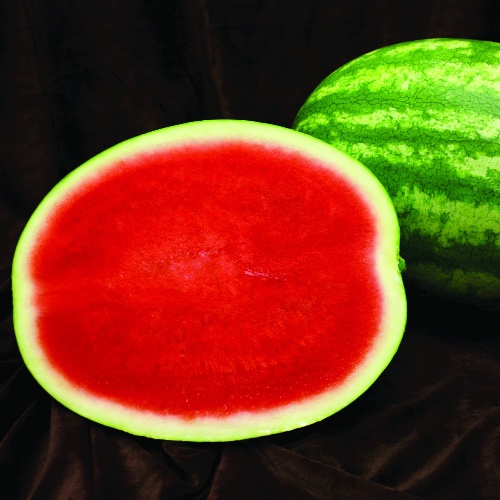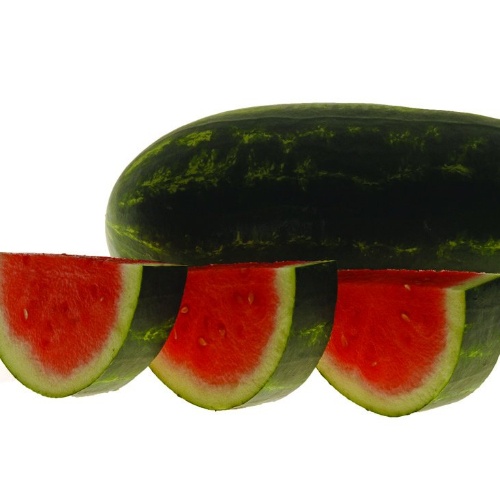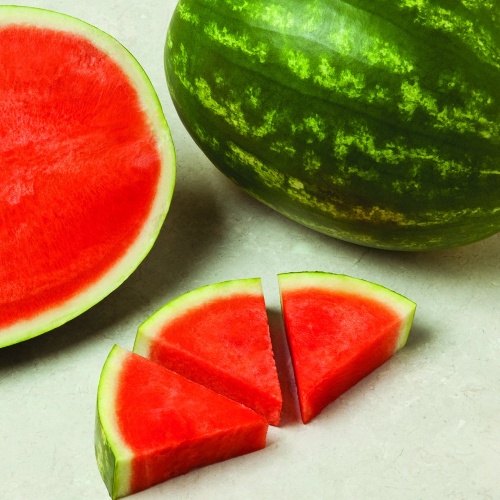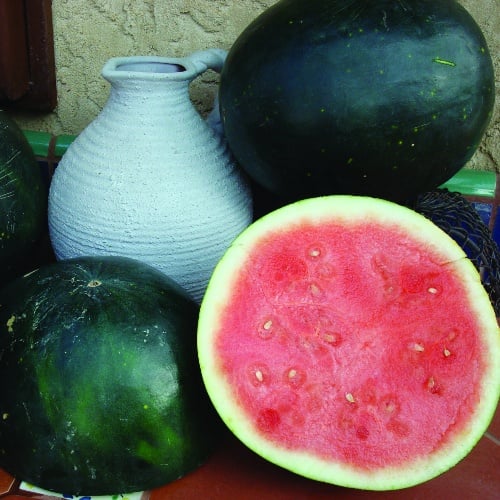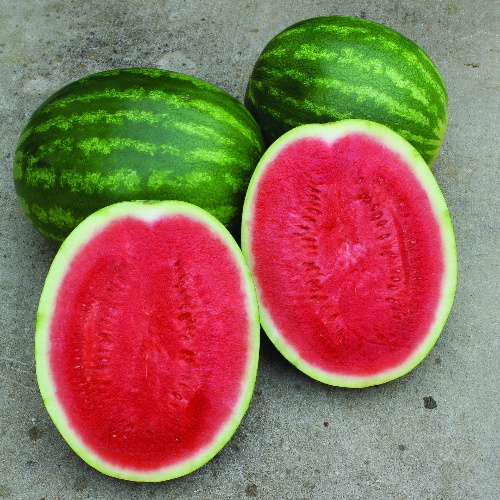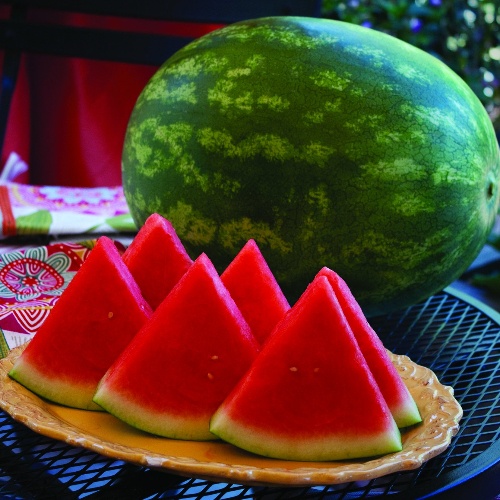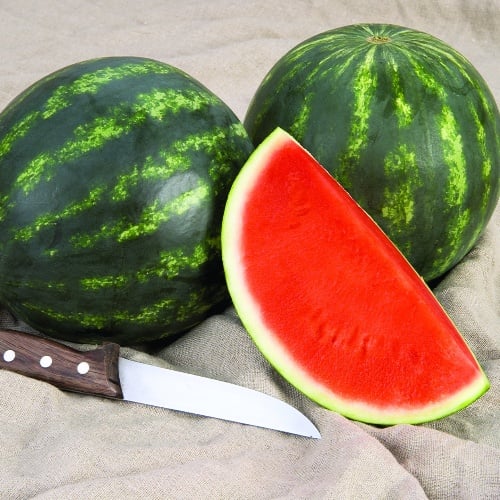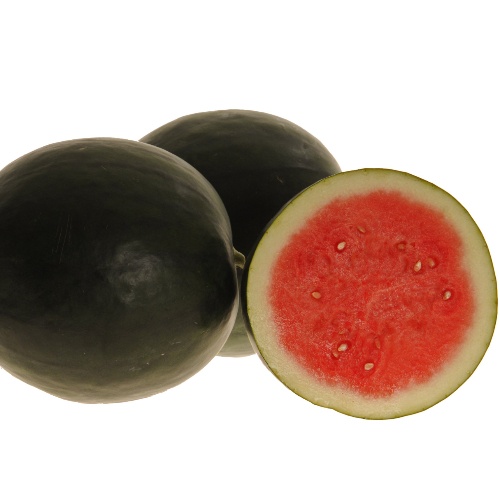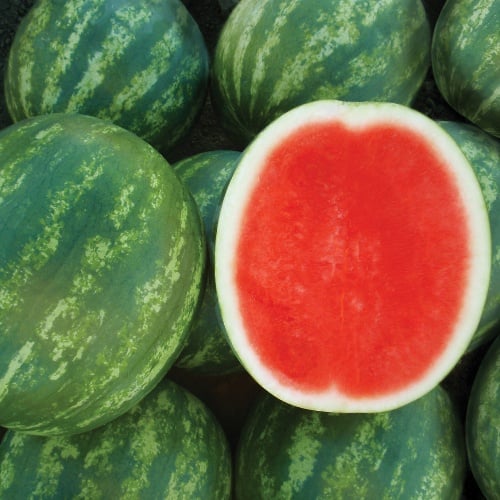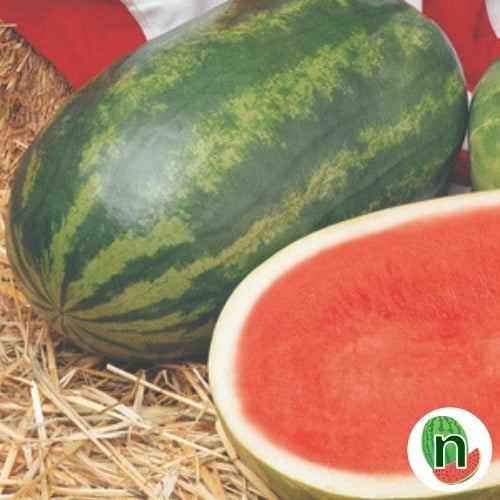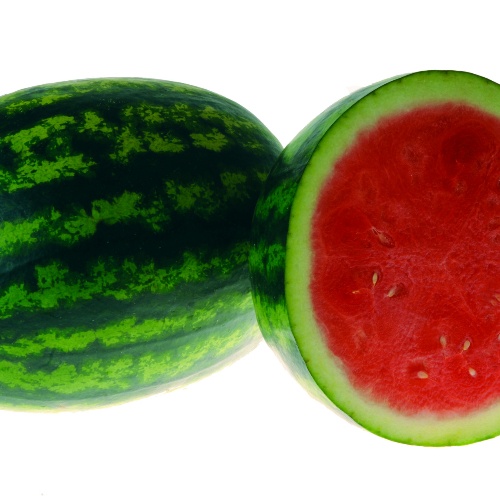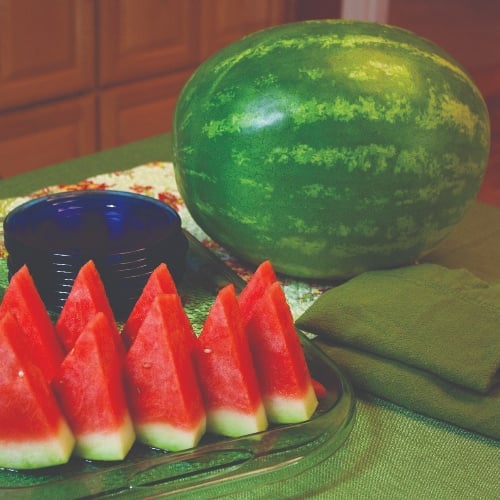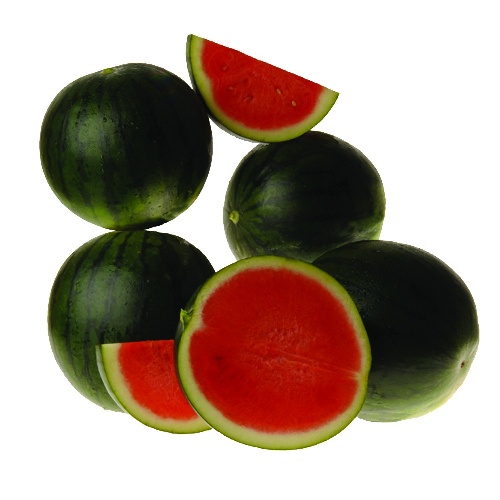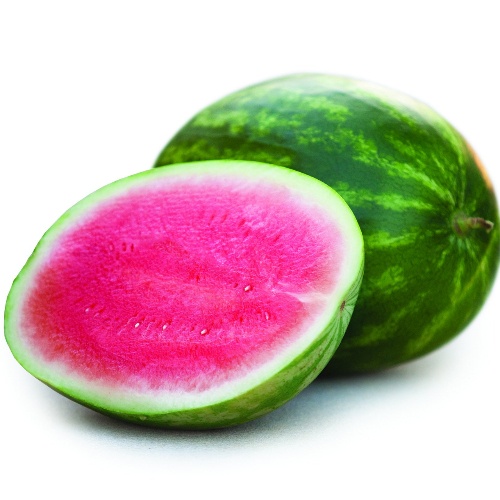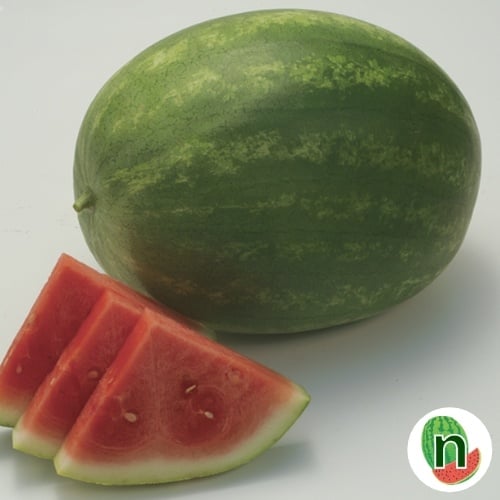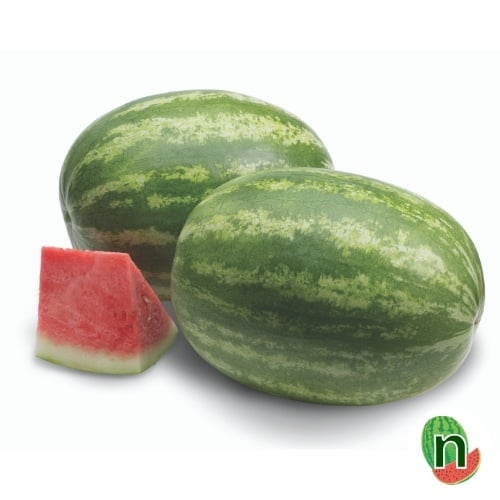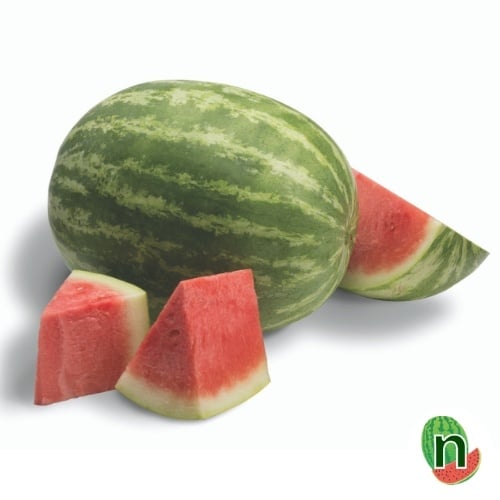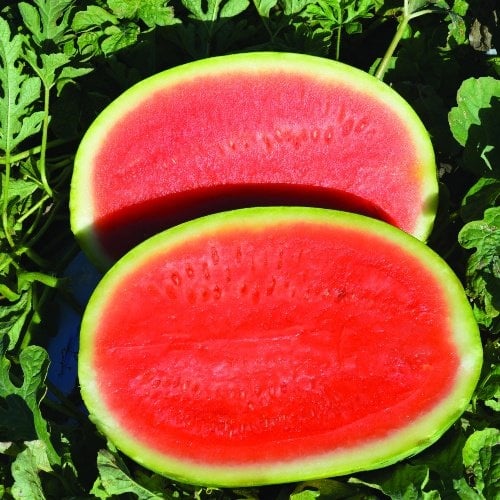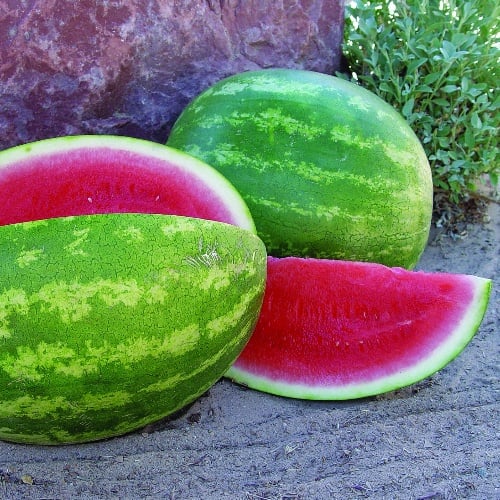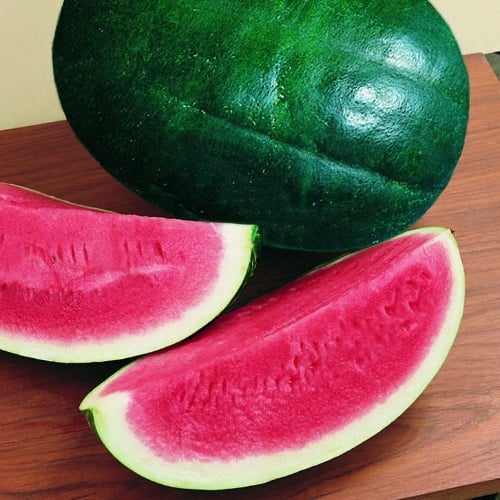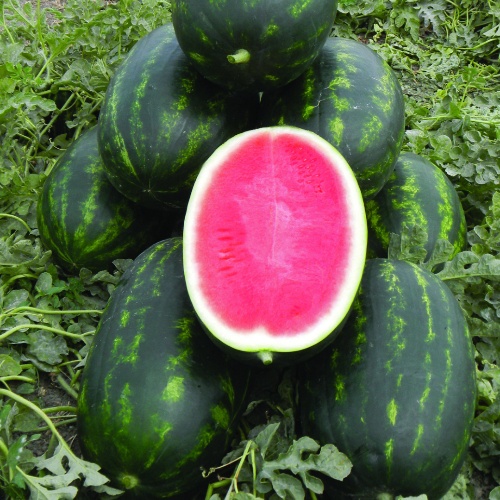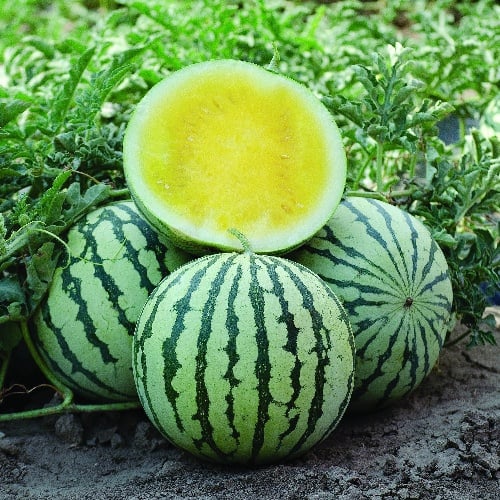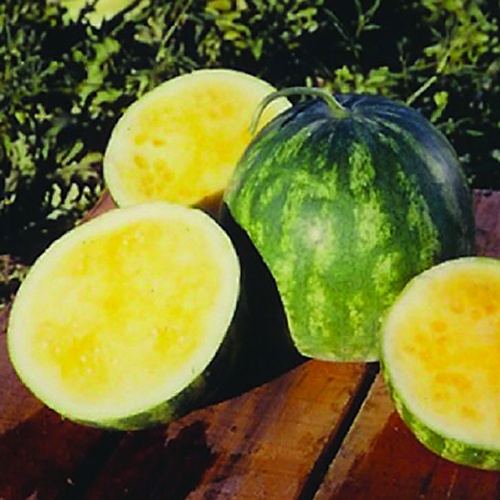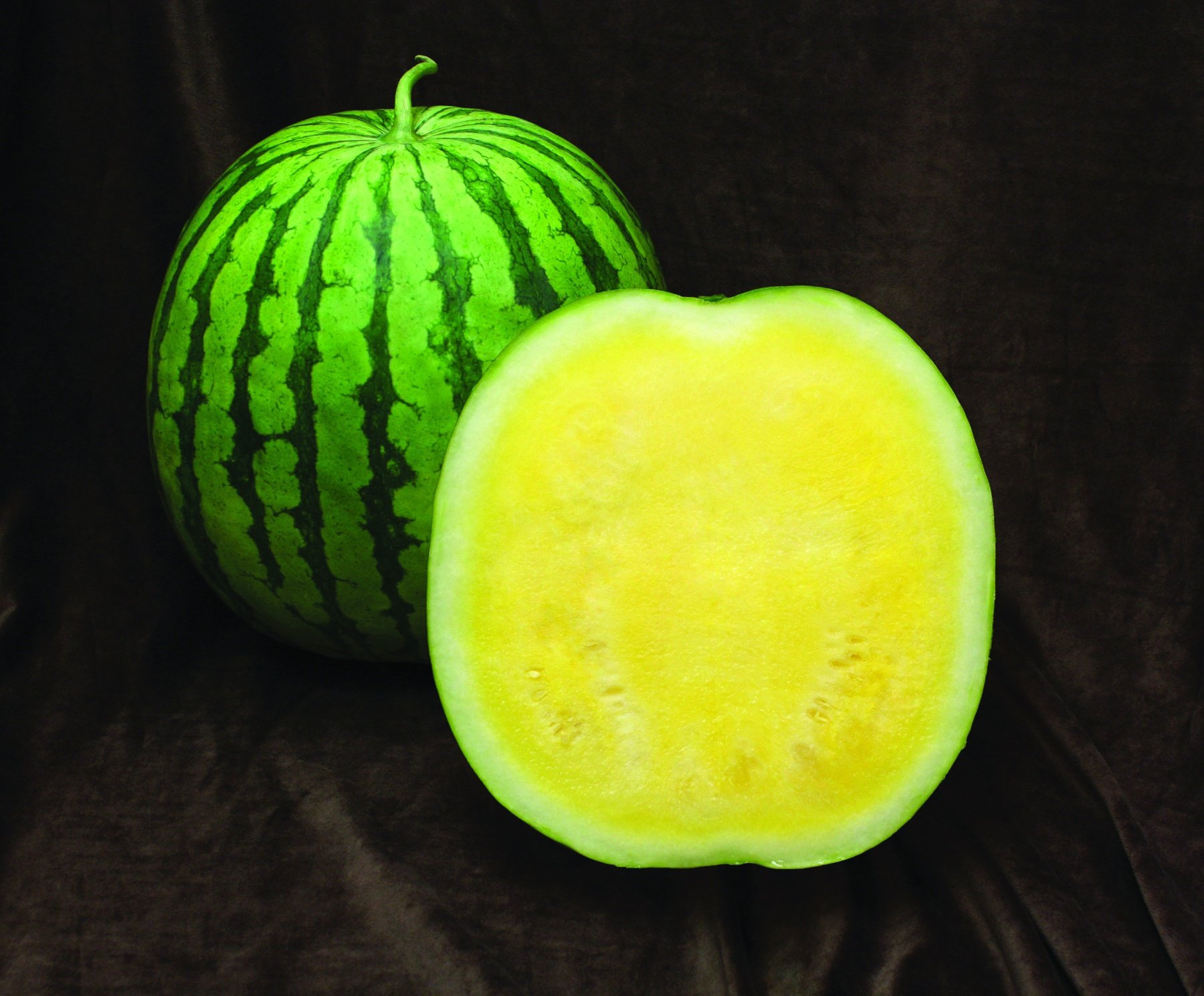Watermelon Triploid
Approx. 400-500 seeds/oz
If you grow for fresh market, triploid F1 watermelons are a crop you can count on to attract plenty of attention. They are waxier than diploid varieties, and bring high prices wherever they're marketed. The flesh is absolutely tops in eating quality, market preference and consumer demand. No seeding necessary! And cut fruit displayed in shrink wrap is a sure seller.
Sometimes incorrectly referred to as "seedless", triploids are sterile hybrids which, because of their genetic makeup, characteristically produce fruit with few or no true seeds. Sometimes cultural practices or weather conditions may result in fruit with some vestigial seeds or empty white seed coats. Because of this, triploid F1 watermelons are not guaranteed to produce seedless fruit.
A special note to growers of triploid F1 watermelons:
Please follow careful practices to grow triploid F1 watermelons successfully. We supply detailed growing instructions with your seed. For best results, we suggest starting seed in the greenhouse in peat pellets (on page 90) 3 weeks before outdoor planting time. Because of their genetic makeup, triploid F1 watermelons must be planted with a diploid (regular hybrid or open-pollinated) variety as a pollenizer in order to assure fruit set.
Days to maturity are from transplant.
Red Fleshed
Yellow Fleshed
| |
Special Limitation of Warranty
TRIPLOID HYBRID WATERMELONS
A. NOTICE:
Hybrid triploid watermelons are sterile, or true, hybrids which characteristically produce fruits with few or no true seeds. Because the absence, or relative absence, of "hard" or true seeds in the fruit of the melon is its chief distinguishing characteristic, the hybrid triploid watermelon is often referred to as a "seedless" watermelon. Despite the popular perception, hybrid triploid watermelons are not true "seedless" watermelons. The first melons to ripen in a field of hybrid triploid watermelons often contain small, vestigial seeds. In addition, certain genetic, cultural and climatic factors are known to cause the formation of empty seed coats, small, white, immature seeds and/or hard seeds in the flesh of the melons. Due to the wide variety of possible causes of hard seed or ovule formation, Hybrid triploid watermelons are not guaranteed to produce seedless fruit.
Hybrid triploid watermelon production requires a high level of grower sophistication. Hybrid triploid watermelons require a pollen source and bees to serve as pollen vectors. The general rule is one pollenizer plant for every 3-4 seedless plants. Hybrid triploids also require special care for satisfactory germination. Growers are encouraged to contact university extension personnel for government publications and information concerning recommended cultural practices. Otis S. Twilley Seed Co., Inc. can also supply certain information on request. Growers are encouraged to develop expertise in growing hybrid triploid watermelons prior to instituting large-scale commercial production.
B. SPECIAL LIMITATION OF WARRANTY :
All hybrid triploid watermelon seeds are sold pursuant to Otis S. Twilley Seed Co., Inc.'s standard terms and conditions of sale. Descriptions and illustrations of hybrid triploid watermelons appearing (in the seed catalog and elsewhere) represent hybrid triploid watermelons as grown under favorable growing conditions in favorable growing areas. Appearance and performance may vary in other geographic locations and under different growing conditions. Otis S. Twilley Seed Co., Inc. expressly excludes any warranty of conformity to description, illustration or sample and extends no warranty that the hybrid triploid watermelon seed sold will produce "seedless" fruit. All implied warranties, including but not limited to any implied warranties of merchantability and fitness for a particular purpose, are expressly excluded.
C. For Nunhems triploid watermelons:
There is a Nunheims triploid waiver agreement in the centerfold of the catalog and also available for download from our  website. You can also contact us for a copy. Nunheims triploid watermelons are marked with the following symbol:
website. You can also contact us for a copy. Nunheims triploid watermelons are marked with the following symbol:
Important Notice To Watermelon Seed Buyers
Please read the important information on the back of the order blank. We must have your signature on the order form if you are going to order more than 1,000 seeds or 1 lb of a variety.
Waiver concerning all watermelon seed purchased from Otis S. Twilley, Inc.
(Growers, Brokers, Packers/Shippers)
In addition to the Twilley waiver agreement, a Nunhems waiver agreement must be signed for any Nunhems watermelon variety.
We want to advise you that the bacterial fruit blotch disease of watermelons has again appeared in watermelon fields in many watermelon producing areas. This disease has been periodically reported since its initial detection in 1989. Losses from this bacterial disease have ranged from minor to as high as 100% of the marketable fruits.
The causal agent of the fruit blotch disease appears to be closely related to Acidovorax avenae subsp. citrulli (synonym: Pseudomonas pseudoalcaligenes subsp. citrulli). The pathogen could be seed-borne from the original seed lot, or result from other host infection. The disease has attacked many varieties of watermelon from different seed producers.
Although new testing procedures are currently under development, it is impossible to conduct any test procedures that will give 100% reliable results with regard to the identification of any seed-borne watermelon fruit blotch infections. Work is being done by public and private researchers, seed companies and growers, to determine improved identification and control measures and to develop statistically reliable testing procedures.
Work is also being done to determine if different varieties of watermelon, both diploid and triploid, have any level of resistance or tolerance to this disease. No varieties to date have been identified as having any significant level of resistance.
The symptoms on young seedlings appear as dark water-soaked lesions on the lower surfaces of the cotyledons or the true leaves. These initial water-soaked lesions later turn necrotic and may also have chlorotic halos surrounding the dead tissues. The lesions will also often appear on the hypocotyls of young seedlings, resulting in the wilting and death of these young plants. The most dramatic and destructive phases of this disease are the fruit infections that occur much later in the growing cycle. The lesions on the top surface of the fruits appear as small, watersoaked areas, which under the right conditions of high temperature and humidity, enlarge rapidly to cover most of the surface of the fruits. Fruit decay often follows. This later condition of the disease cycle could lead to significant economical losses to the grower.
In cases where the pathogen is carried in the seed, the typical lesions described above will appear on the young seedlings within 7 days after seedling emergence. If no symptoms are observed on the young seedlings within three weeks after emergence, it is unlikely that the bacterium is carried on the seed and that any subsequent infection is most likely from other sources. It is imperative that each grower inspect the young plants during this early stage, in order to determine the presence or absence of these symptoms and to mitigate any potential economical losses.
Caution: Symptoms that appear on plants in the early stages of growth, and especially those symptoms caused by secondary infections, may not be evident on new foliar parts as the plants develop. The pathogen, however, may still be alive in infected tissues, and may infect the fruits if favorable conditions of temperature and humidity prevail. Do not retain any plants that show any symptoms at any time.
